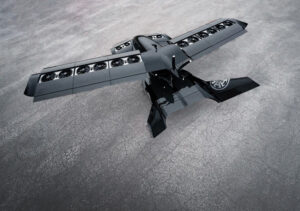Sikorsky-Boeing Select New Honeywell Engine To Power FLRAA Offering

Sikorsky and Boeing said Thursday they have selected Honeywell’s new HTS7500 turboshaft engine to power its Defiant X helicopter offering for the Army’s Future Long Range Assault Aircraft (FLRAA) competition.
Honeywell said the new HTS7500 is based on its T55 engine, which powers the Army’s Chinook heavy-lift fleet, noting it’s 42 percent “more powerful” than that system and “has the lowest total weight compared to other engines in its horsepower class.”
“This engine builds upon the battle-proven architecture of the T55, but the HTS7500 takes engine performance, reliability and efficiency to a whole new level,” Dave Marinick, Honeywell Aerospace’s president for engines and power systems, said in a statement.
The Sikorsky-Boeing team and Bell, offering its V-280 Valor tiltrotor aircraft, are the two competitors for the Army’s FLRAA program to find a replacement for its Black Hawk helicopters.
A production contract for FLRAA is set to be awarded in late fiscal year 2022.
“Defiant X is a transformational aircraft, and Honeywell is giving us a transformational engine to power it,” Paul Lemmo, president of Sikorsky, said in a statement. “Defiant X is optimized for operational effectiveness, sustainment and interoperability with the enduring fleet, and will transform the Army.”
Honeywell called the new HTS7500 engine its “most technologically advanced model,” and said it’s designed to exceed FLRAA’s mission power and fuel consumption requirements.
“The new engine comes equipped with a modernized control system, which enables a highly secure flow of engine data,” Honeywell wrote in a statement. “The control system improves operating capabilities, reduces life-cycle costs, and ensures engine health status through its digital thread road map.”
Sikorsky-Boeing’s Team Defiant told Defense Daily they have used the Honeywell’s T55 engine in its SB>1 Defiant technology demonstrator platform informing the Defiant X offering as well as in the Propulsion System Test Bed used to gather data for furthering FLRAA development.
Last month, the Sikorsky-Boeing team detailed a recent full FLRAA mission profile flight test with SB>1 Defiant, to include conducting low-level flight and confined-area landings, reaching a speed of 236 knots and conducting 60-degree banked turns.
The post Sikorsky-Boeing Select New Honeywell Engine To Power FLRAA Offering appeared first on Avionics International.
—————
Boost Internet Speed–
Free Business Hosting–
Free Email Account–
Dropcatch–
Free Secure Email–
Secure Email–
Cheap VOIP Calls–
Free Hosting–
Boost Inflight Wifi–
Premium Domains–
Free Domains










